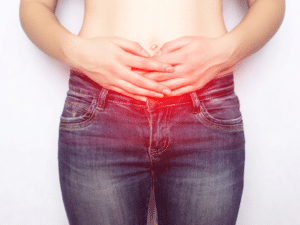Explore different types of abdominal hernias including Umbilical, Ventral, Inguinal, and Incisional Hernias. Learn their causes, common symptoms, and an overview of the treatments.
An abdominal hernia may develop due to the weakness. Tearing of the fascia connective tissue or nearby muscles in the abdominal wall. This can result in the protrusion of fatty tissues. Even supposing, a segment of an internal organ, such as an intestinal loop.
You can easily detect an abdominal hernia by the bulge it creates on the abdominal wall. However, it’s important to understand that certain hernias can go unseen. Making a diagnosis tricky. If you suspect an abdominal hernia. It is crucial to consult a medical professional to receive an accurate evaluation and the right treatment.
What Kind of Hernia Do I Have?
Additionally, the terminology used to describe hernias can vary among medical professionals. Consequently, patients may find it challenging to communicate their symptoms to doctors. Furthermore, various medical publications and resources may use different terminology, adding to the confusion. However, by understanding the different classifications and seeking information from healthcare providers. Subsequently, individuals can overcome this confusion and gain a clearer understanding of their specific type of hernia.
Types of Abdominal Hernias Chart
To help people understand better. We have given a summary of the different types of abdominal hernias. It also included some answers to frequently asked questions about hernia terms and types.
| Ventral Hernias | Location |
|---|---|
| Epigastric Ventral Hernia | Develop along the vertical center line of the abdomen below the breast bone and above the belly button. |
| Umbilical Ventral Hernia | They form directly inside the belly button and are often found in infants. |
| Periumbilical Ventral Hernia | Found above or below the belly button. |
| Lateral Ventral Hernia | Develops to the left or right side of the middle of the abdomen. |
| Incisional Ventral Hernia | Occur at the site of a previous abdominal surgical incision. |
| Inguinal Hernias | Location |
| Direct Inguinal Hernia | Form as a result of chronic pressure on the abdominal wall. They are located on the right or left side of the groin. |
| Indirect Inguinal Hernia | They occur from birth (congenital) and are most often found in the groin area in males. |
| Femoral Hernia | They develop on either the left or right side of the pelvic bone. Particularly, under the inguinal canal. Precisely, near the upper thigh, can be quite elusive to diagnose. Not only do they often remain concealed. But they can also be quite challenging to identify. Interestingly, Femoral hernias are more common in women than in men. |
Hernia FAQs
What is the Difference Between a Ventral Hernia and an Umbilical Hernia?
A specific type of ventral hernia is an umbilical hernia. Though, you can see them from the outside of the abdomen as a bulge in the belly button. Besides, medical professionals sometimes refer to an umbilical hernia as a ventral hernia because it falls in that category.
What is the Difference Between a Ventral and an Inguinal Hernia?
Ventral hernias, which manifest in the upper portion of the abdomen. They are classified as such. Doctors consider hernias that form in the lower abdomen or the groin area as inguinal hernias. Also, the term “inguinal” directly translates to “of the groin”.
What is the Difference Between a Ventral and an Incisional?
An incisional hernia, also known as a ventral hernia. Additionally, it is a specific type of abdominal hernia that can occur anywhere in the abdominal region. Where a prior surgery has taken place. Moreover, the formation of this hernia is related to the weakness in the area. Furthermore, at the location where the incision was created. In fact, around 2 out of every 1000 women who have had C-section incisions. Eventually, they will experience an incisional hernia within 10 years.
What are the Key Differences Between Diastasis Recti vs. Ventral Hernia?
During pregnancy, the growing baby expands the uterus and exerts pressure along the abdominal wall. Indeed, this can stretch out and separate the abdominal muscles (rectus abdominis). Even so, the connective tissues (fascia) that support the body’s core. When the abdominal muscles become separated in this way, we call the condition diastasis recti. Again, the degree of diastasis recti can vary due to multiple pregnancies or in women who carry twins or multiples.
Obesity or significant weight changes can also cause diastasis recti. Because carrying excess fat puts additional strain on the abdominal muscles. Additionally, a diastasis recti, referring to the separation of abdominal muscles, can coexist simultaneously with a ventral hernia. Although, a weakened area in the abdominal wall allows abdominal or intestinal tissue to protrude, characterizing this condition.
IBI Healthcare Institute offers the most advanced and effective treatments for both ventral hernias and inguinal hernias. Moreover, if you are concerned that you may have a hernia or are seeking treatment for hernia symptoms. Contact us for treatment options best suited to you.











